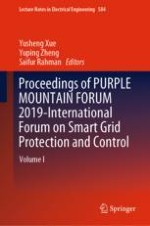
2020 | OriginalPaper | Chapter
A Novel Loss of Excitation Protection Principle for Synchronous Condenser Based on Leading Rate
Authors : Hong Cao, Zexin Zhou, Huanzhang Liu, Zhi Zhang, Wenrui Cai, Xingguo Wang, Dingxiang Du, Jianmin Chen, Zhiyong Qiu
Published in: Proceedings of PURPLE MOUNTAIN FORUM 2019-International Forum on Smart Grid Protection and Control
Publisher: Springer Nature Singapore
Activate our intelligent search to find suitable subject content or patents.
Select sections of text to find matching patents with Artificial Intelligence. powered by
Select sections of text to find additional relevant content using AI-assisted search. powered by